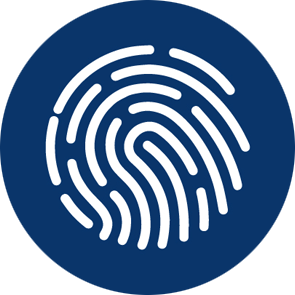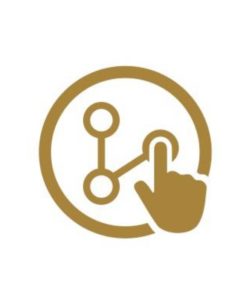Intentional Use of Data
Intentional Use of Data
What Does the Research Say About Using Student Data?
- Intentional Use of Data focuses on how schools use the data from Rapid Check-Ins, Goal Achievement activities, and other school data collection activities to organize support for students.
- Research show that effective schools use data to make decisions about school improvement and student outcomes.
- Researchers have found that schools can use data to help in organizational learning as well as to target specific goals. According to Supovitz (2010), a cycle of data may include: (1) data capture; (2) meaning-making process; (3) information sharing; and (4) knowledge organization.
- Today’s educators operate in information‐rich environments, in which numerous performance data exist that may inform decision‐making and facilitate efforts to promote personalization for academic and social learning (Anderson, Leithwood & Strauss, 2010).
What is Data?
- Data can be generated by teachers in their classroom, by teams, or by the school and district. Student data can take many forms, including:
- Academic data – Grades, test scores, GPA, lists of students who are failing particular classes
- Behavioral data – Attendance, referrals, detentions, expulsions, etc.
- Social emotional data – Information gathered through adult-student interactions; data collected through Rapid Check-Ins with students, parent feedback, etc.
Below is a short video on the types of student data teachers and administrators can use.
How can PASL schools and teachers make intentional use of data?
What Can Schools Do?
- Schools with strong professional communities have discussions about challenges facing their students. These conversations include discussions about students’ discipline issues, in addition to discussions on other topics such as attendance and academic performance (Copeland, 2010).
- Successful PASL schools talk about data in a safe, positive climate.
- They adopt a balanced approach to data sources, using internal and sometimes informal data to complement externally derived data.
- Successful schools use data to identify and refer students who are struggling academically, socially, and or emotionally for specific programs and resources in the school.
What Can Teachers Do?
- PASL teachers collect student information regularly and share this data with each other to meet the needs of students they have in common.
- Teachers come together around data to discuss instructional ideas for “moving” students.
- They refrain from using data as a “gotcha” by using positive language, encouragement, and targeted support aimed at improving the student’s grades, behavior, etc.
- PASL teachers share information with each other about successful approaches for putting PASL into practice, therefore cultivating a collection of “best practices” to use in their classrooms.
- PASL teachers share student information with core administrators, counselors, and others staff to make them aware of any student issues.
Below is a short video on how student data can benefit teachers and students.
For more information on some of the best practices that schools are using to collect and use data, refer to the following documents: Best Practices for Collecting & Using Data (pdf); Best Practices for Collecting & Using Data (doc)
The following tools offer examples of how educators may enact these principles of intentional use of data to better understand school data and how it may be used to facilitate students’ academic and social-emotional well-being. These tools would be most appropriately used during the planning and reflection stages of PASL implementation, as well as when educating others school leaders on the components of PASL.
Student interest and learning survey: A student interest survey can help educators understand students’ interests and learning preferences.
Student feedback survey: Student feedback surveys can inform educators of students’ perspectives on their classroom and school-based experiences.
Teacher/staff feedback survey: Collecting data from faculty and staff can help improve PASL implementation.
Quarterly review of student data: Using data intentionally requires a regular review of the many forms of data about students that schools routinely collect.
Rapid check-ins data collection: As educators conduct Rapid Check-ins with students, they need a way to document important information learned in the interactions.
Have a suggestion for the PASL Toolkit? Add it here.
Additional Research
Anderson, S., Leithwood, K., & Strauss, T. (2010). Leading data use in schools: Organizational conditions and practices at the school and district levels. Leadership and Policy in Schools, 9(3), 292-327. https://www.rdc.udel.edu/wp-content/uploads/2015/04/leading-data-use-in-schools.pdf
Levin, H. M. (2012). More than just test scores. Prospects, 42(3), 269-284. doi:10.1007/s11125-012-9240-z
Levin, H. M. (2013). The utility and need for incorporating noncognitive skills into large-scale educational assessments. In M. von Davier, E. Gonzalez, I. Kirsch, & K. Yamamoto (Eds.), The Role of international large-scale assessments: Perspectives from technology, economy, & educational research, (pp. 67–86). NY, New York: Springer. https://www.researchgate.net/publication/267785936_The_Utility_and_Need_for_Incorporating_Noncognitive_Skills_Into_Large-Scale_Educational_Assessments
Supovitz, J. (2010). Knowledge-based organizational learning for instructional improvement. In A. Hargreaves, A. Lieberman, M. Fullan, & D. Hopkins (Eds.), Second international handbook of educational change (pp. 707–723). Retrieved from https://link.springer.com/





